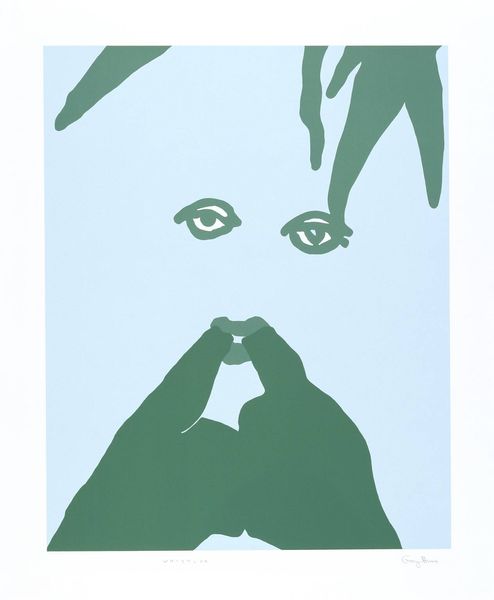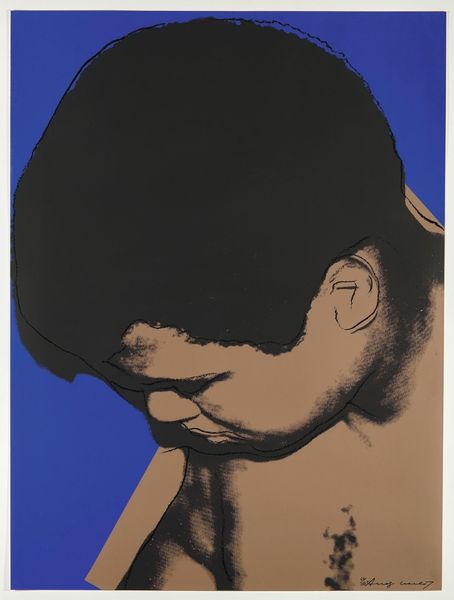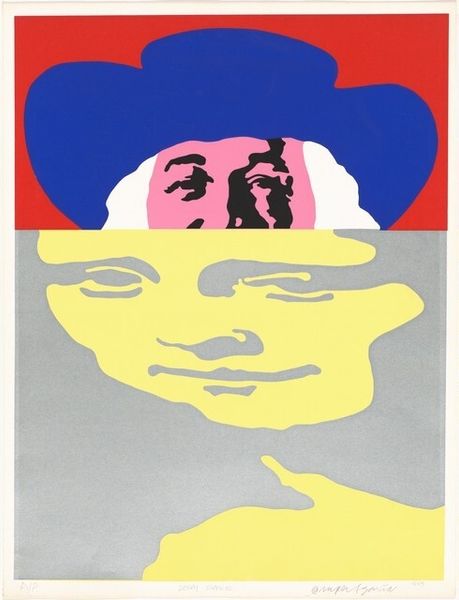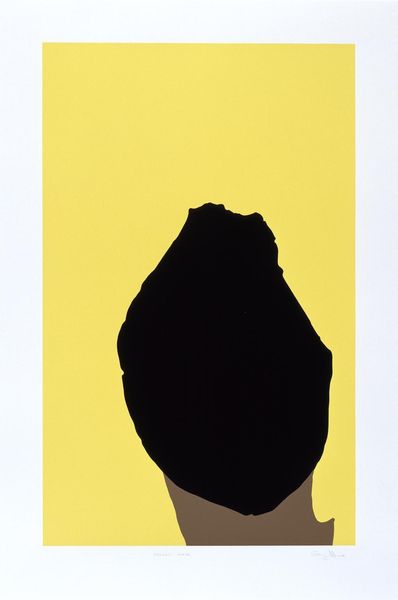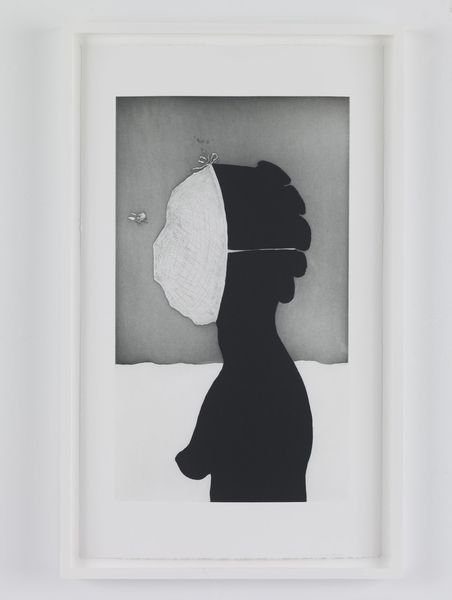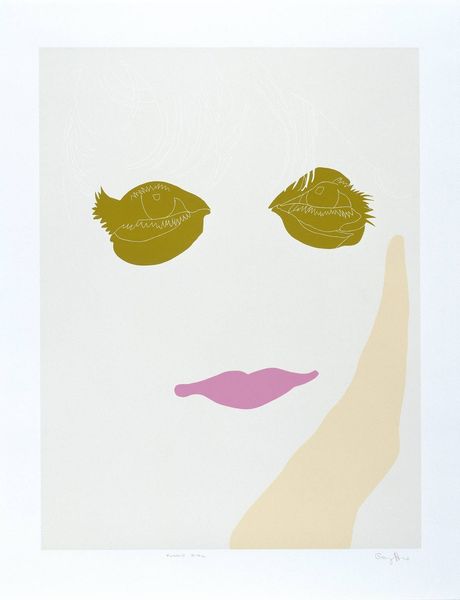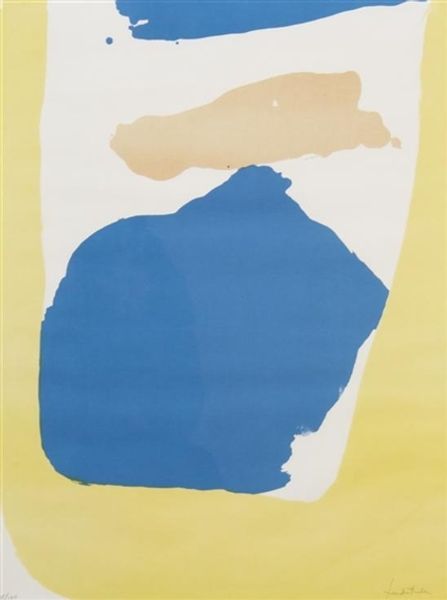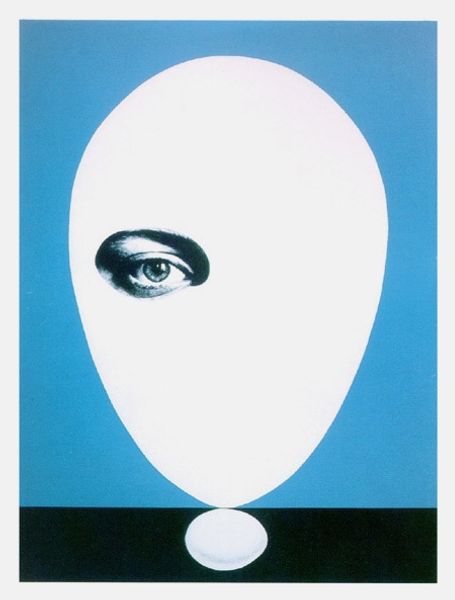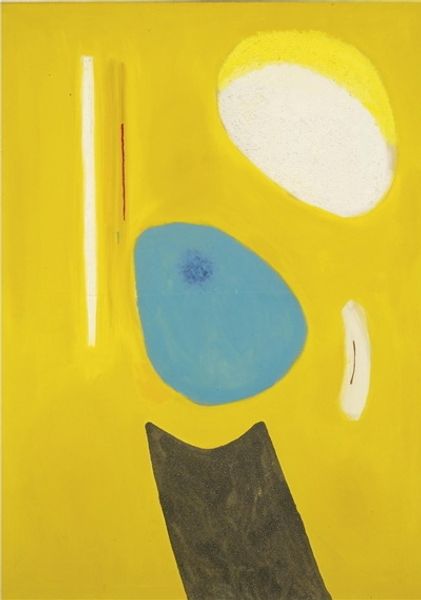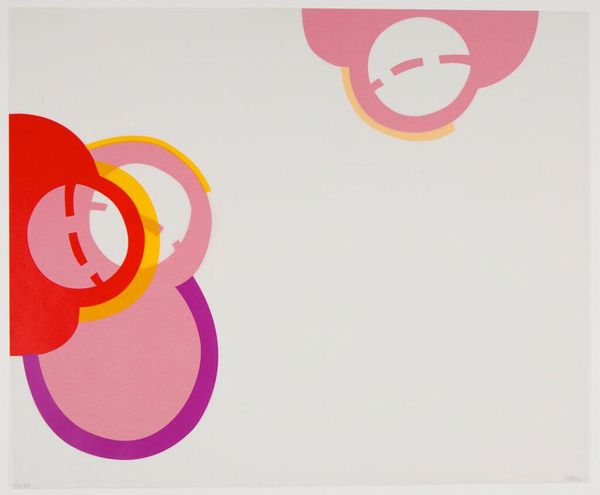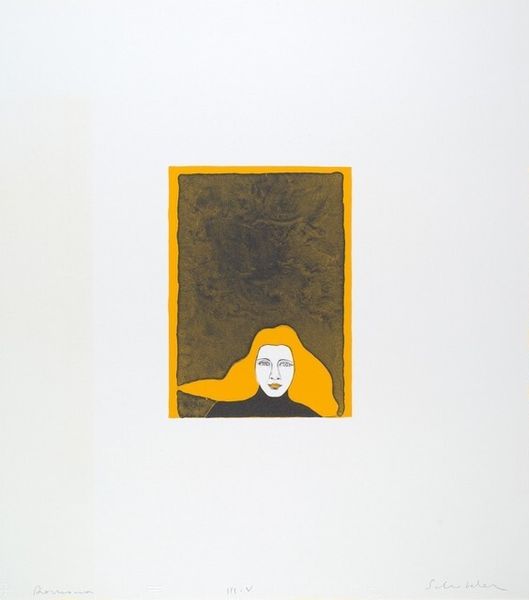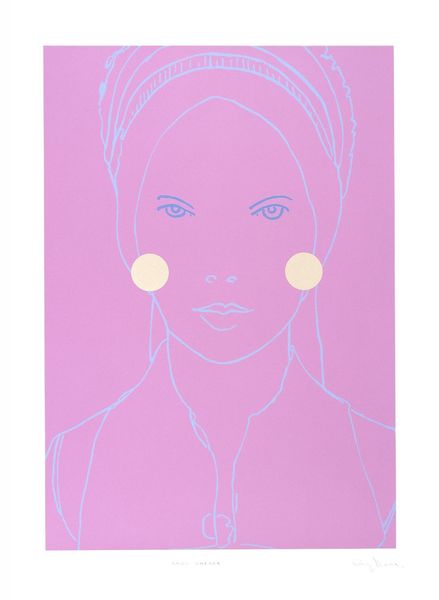
Dimensions: image: 908 x 678 mm
Copyright: © Gary Hume | CC-BY-NC-ND 4.0 DEED, Photo: Tate
Curator: Editor: This is Gary Hume’s “Cerith.” It's so striking with its bold colors and simplified forms. What do you make of how Hume chose his materials and the process behind this print? Curator: Well, consider the flatness. Hume’s use of enamel paint, often associated with industrial and commercial applications, elevates the mundane. He challenges the traditional hierarchy of art materials and labor. What does this say about consumerism, about how we engage with mass-produced images? Editor: That's a really interesting way to look at it. So, the choice of materials is as important as the image itself? Curator: Absolutely. The materials and the process are not neutral. They carry social and economic meanings that shape our understanding of the artwork. Editor: I never thought about it that way before! It gives me a lot to consider. Curator: Indeed, it broadens our appreciation for the artwork.
Comments
Join the conversation
Join millions of artists and users on Artera today and experience the ultimate creative platform.
tate 6 months ago
⋮
Hume’s Portraits is a series of ten screenprints commissioned by Charles Booth-Clibborn and published by him under his imprint, The Paragon Press, London. They were proofed and printed at Coriander Studio, London in an edition of thirty-six plus ten artist’s proofs. Tate’s copy is number eighteen in the edition. Each print was made using between three and fifteen colours and coated with several layers of varnish in sections. The varnish results in a sheer, glossy surface similar to that achieved by Hume’s use of household gloss paint in his paintings such as Incubus 1991 (Tate T07184) and Water Painting 1999 (Tate T07618). The prints are based on paintings Hume made between 1994 and 1998. Some of these paintings were derived from photographs, others from Hume’s imagination. Each print has a subtitle related to the original painting. This is the eighth image and its subtitle is Cerith. It is based on a larger painting of the same title (1997, private collection, New York) in gloss paint on aluminium panel, a portrait of Hume’s friend, British artist Cerith Wyn Evans (born 1958). Like other portraits in the series, Cerith represents the subject’s face and neck with a large monochrome area. In the original painting this is a graded bluish grey, intensifying in tone in a horizontal band at the middle of the face. In the print version the area is flat beige without tonal gradations. The subject’s short hair is deep blue and his only features are thickly-lashed eyes outlined in pale yellow. A pale pink disc is positioned at the side of Cerith’s face at the level of his ear, in a manner similar to the discs on, Lady Parker (Tate P78687), the previous image in the series.
